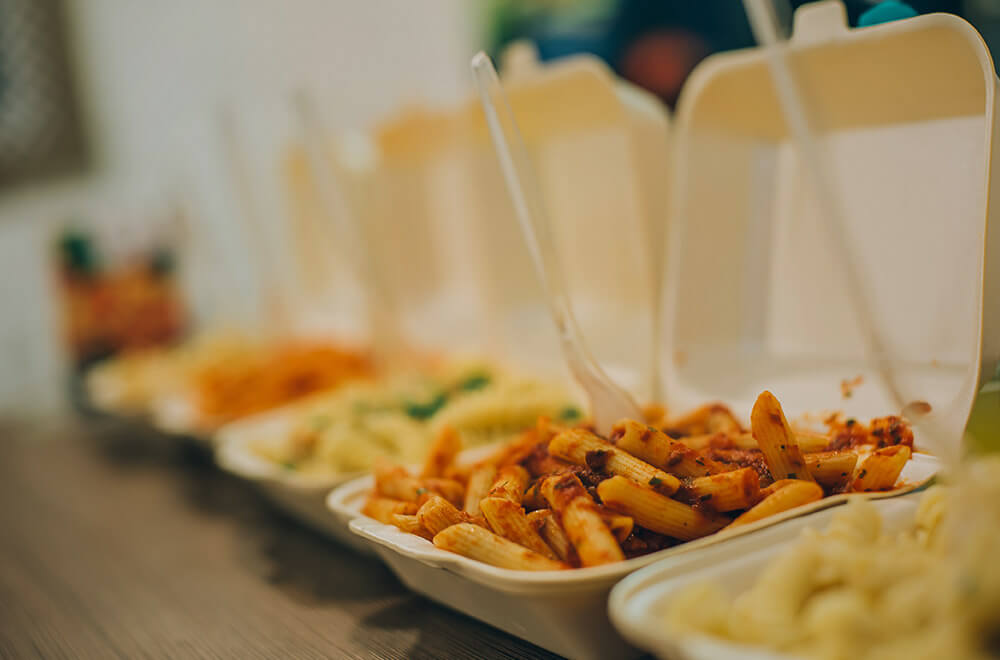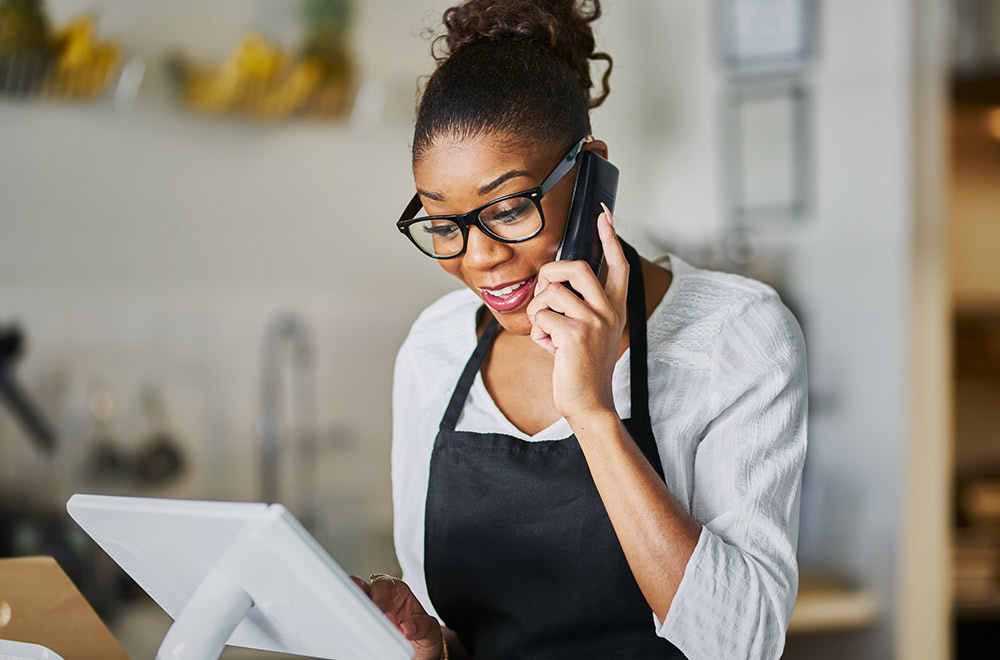As the coronavirus continues to force people to stay in their homes, many businesses are taking a hard economic hit—especially restaurants. The coronavirus has closed the doors of restaurants across the U.S., at least for dine-in. As restaurants scramble to navigate the process of transitioning to 100-percent takeout and delivery orders, we’re here to help with a variety of advice and resources for restaurant owners, such as our e-book, Top Third-Party Food Delivery Apps.
We know that in the current climate, third-party apps might be hurting many local restaurants. With fees as high as 30%, delivery experiences that don’t always meet expectations, and occasionally questionable customer service, restaurants need to get creative to survive—and we can help. Here are some tips and tricks to help you gain new customers, without crushing your bottom line.
Increase new customers and gross sales
We recommend you make adding as many third-party delivery services as possible your top priority. This may come as a shock, but this is the first step to bringing in more first-time customers and will increase your total sales. One thing delivery apps do well is put you on a platform used by people who are ready to order their next meal. Start with the ones that have no startup costs and work your way down the line from there.
You may be tempted to raise prices by 20-30% to accommodate for the fees charged by delivery companies. While every situation is different, we suggest that you examine your current labor and food costs in this new climate before adjusting your pricing. Raising prices beyond simply offsetting fees the third-party app charges diners will give your restaurant a new perceived cost that could end up chasing new customers away. One way to think of the 20-30% fee from third-party delivery apps is as a marketing expense, introducing you to new customers and encouraging them to connect directly with you on their next order.
Turning app customers into YOUR customers
Most third-party delivery and ordering apps charge both the restaurant and the diner, inflating the cost significantly above what someone ordering directly from your restaurant would pay. The key is to highlight this fact to everyone who places an order at your restaurant on an app. A simple flyer in the to-go bag will do the trick. Keep it short, and to the point. Be sure to:
- Let the diner know you’re thankful for their order.
- Explain that customers can place takeout orders (and delivery, if offered) by calling your restaurant directly, or by ordering via your website (more on this later). Encourage them to follow you on social media and/or join your email list, where you can showcase direct-order-only specials.
- Educate your customer on the fact that by ordering directly from your restaurant it saves both them—and you—money.
- Offer a free app or dessert on their next direct order to really sweeten the deal.
Including a promotional flyer highlighting the advantages of ordering directly from your restaurant will go a long way in converting your first-time (and even repeat) customers into direct guests. Not everyone will ditch ordering via the apps, but let’s do a little math to see the impact of what drawing in more direct orders could look like for your restaurant.
Let’s say 100 customers order $50 worth of food directly from your restaurant—that equates to $5,000 spent by your diners, and $5,000 going directly to your restaurant.
- 100 orders at $50 direct cost to guest = $5,000 to your restaurant
- Now let’s assume you use a delivery service to bring you 100 customers, who purchase $50 worth of food each. Only in this scenario, the delivery service charges the restaurant 30% and the customer a 16% service charge and $7 delivery fee. Your restaurant gets $3,500 (100 orders at $35 each)
- Your customers pay $6,500 (100 orders at $65 each – $50 base – $8 service fee – $7 delivery fee)
- And the delivery service takes $3,000
So, what’s the impact of converting delivery app customers to direct customers?
- Convert 25 delivery app customers to direct customers and:
- Your restaurant earns $3,875 (75 orders at $35 each, 25 orders at $50 each)
- Your customers pay $6,125 (75 orders at $65 each, 25 orders at $50 each)
- The delivery service takes $2,250
- Convert 50 delivery app customers to direct customers and:
- Your restaurant earns $4,250 (50 orders at $35 each, 50 orders at $50 each)
- Your customers pay $5,750 (50 orders at $65 each, 50 orders at $50 each)
- The delivery service takes $1,500
- Convert 75 delivery app customers to direct customers and:
- Your restaurant earns $4,625 (25 orders at $35 each, 75 orders at $50 each)
- Your customers pay $5,375 (25 orders at $65 each, 75 orders at $50 each)
- The delivery services takes $750
What we can clearly see is how important every order you can shift from being placed on an app to being placed directly with your restaurant is for your bottom line, and for your customers.
Improving direct ordering experience
Due to the overabundance of third-party apps, many potential guests will use a search engine first to figure out which restaurant they want to order from, then find out which app that restaurant uses for ordering. One of the most-searched phrases on Google is “restaurants near me.” That’s why it’s important for your web presence to be as up-to-date and streamlined as possible. This means regularly updating your menu on Google, Yelp, Tripadvisor, social media, and most importantly—your website.
There are a handful of companies with the ability to integrate with Google. The fees tend to be lower than many of the third-party apps, and customers can place an order online directly from:
- Google Search
- Google Maps
- Google Assistant
Giving customers the ability to easily place an order on your website or via Google will make the process of moving away from app-based ordering to direct web ordering more seamless for your guests.
If we sound bullish on Google integrations, it’s because we as a business believe in the effectiveness of the channel. You’re encouraged to investigate a Google integration option with your advisors to see if it might be right for you.

Double down on community
Locally owned and operated restaurants are the cornerstone of neighborhoods all over the country. People remember their favorite places for date night, Sunday brunch with friends, and where they first discovered their love of mezcal. People brag about their local restaurants, consider it a badge of honor to be a “regular,” and will be the first to support you any way they can, now more than ever. They’re the key to your grassroots marketing effort.
Create special, direct-order-only dishes or other offerings to further encourage your customers to move away from placing third-party orders. DIY kits are becoming popular in the current climate as consumers look for ways to re-create meals, desserts, cocktails, and more from their favorite restaurant in their home.
Use your social media, email list, even your curbside marquee or A-frame to let your most loyal followers know you’re open for delivery and takeout. Explain the easiest ways for them to order, be clear about what times you’re open, and highlight the measures you’re taking to make all transactions safe for staff and guests.
Consider in-house delivery If you had to lay off staff, check to see if any of them would consider working as temporary delivery drivers for your restaurant. Adding a few dollars to each order will give them an added incentive, as will the ability to make tips. This brings the ease of delivery to the consumer with the peace of mind that your food is delivered in a timely manner by someone truly invested in your restaurant. And remember, it’s always best practice to discuss offering direct delivery services with your advisors and insurance brokers before implementing a new course of action.
To learn more innovative restaurant marketing ideas and tips that can help you navigate the current environment, download our free e-tool, “Coronavirus Era: 13 Restaurant Marketing Tips.”






